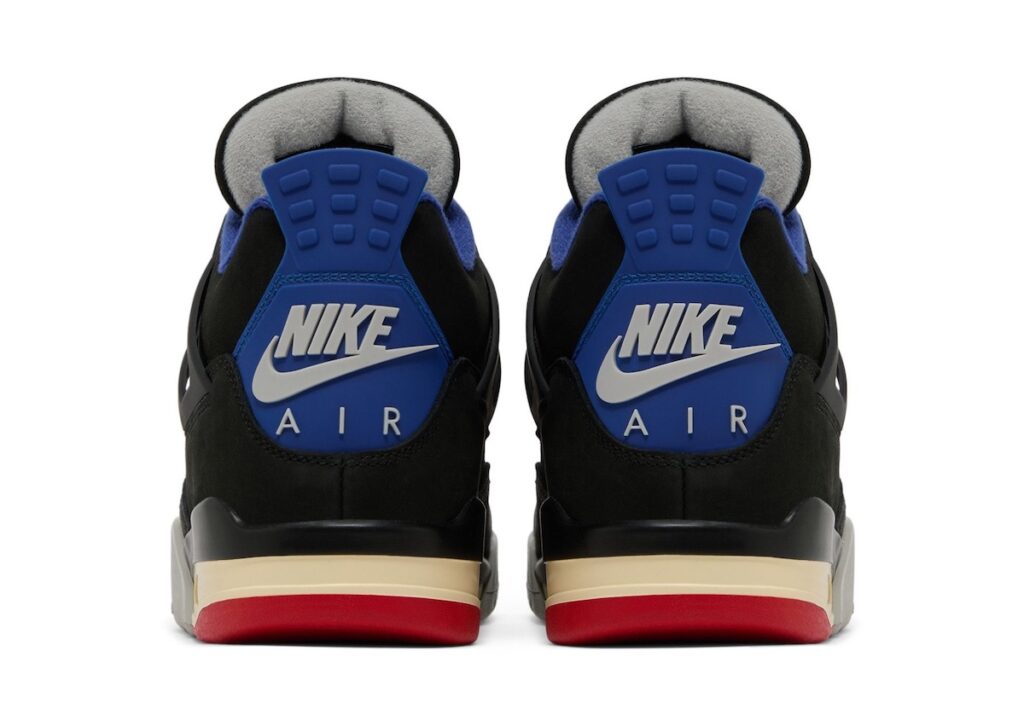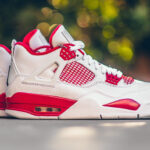“`html
Air Jordan 4 Rare Air: Price Check & Buyer’s Guide
The Air Jordan 4 “Rare Air” was a limited-edition release known for its unique colorways and detailing, often featuring laser-etched patterns. When buying collectible sneakers like the Air Jordan 4 Rare Air, price comparison is crucial as costs can vary significantly between sellers, and understanding the market can save you a lot of money.
Retailer Comparison: Where Can You Find Them?
Finding Air Jordan 4 Rare Air sneakers at standard retail stores like Nike, Foot Locker, or other major shoe chains today is virtually impossible. These shoes were released in the mid-2000s (e.g., the “Laser” editions around 2005, “Tour Yellow” around 2006) as limited editions.
This means that, unlike current general release sneakers, you won’t find them sitting on shelves at their original retail price. Therefore, your main source for these coveted kicks will be the resale market.
Resale Market Analysis: What Do They Cost Now?
The resale market is where collectors and sneaker enthusiasts buy and sell rare and out-of-production sneakers. For the Air Jordan 4 Rare Air, prices can fluctuate widely based on several factors.
* StockX: Prices for various Air Jordan 4 “Rare Air” colorways (like the “Laser” versions, “Cool Grey Laser,” or “Tour Yellow”) typically range from around $300 to $800+ USD depending on condition (new/deadstock), size, and specific colorway rarity. Some extremely rare or pristine pairs might fetch even higher prices.
* GOAT: Similar to StockX, GOAT offers a platform for buying and selling authentic sneakers. Prices are comparable, often varying from $350 to $900+ USD for new pairs. Used pairs will be listed at lower prices depending on their condition.
* eBay: You can find a wide range of prices on eBay, from potentially lower deals to very high asks. However, the risk of encountering counterfeit sneakers is higher if you’re not careful. Expect prices to be in a similar ballpark to StockX and GOAT for legitimate pairs, but with more variability.
Factors Affecting Resale Prices:
* Condition: Deadstock (DS) pairs – brand new, unworn, with original box and accessories – command the highest prices. Used pairs will be cheaper, with the price decreasing based on wear and tear.
* Size: Very common sizes might have slightly more availability and thus slightly more competitive pricing. Extremely small or large sizes can sometimes be rarer and more expensive.
* Colorway Rarity & Popularity: Some “Rare Air” colorways are more sought-after or were produced in smaller quantities than others, driving their prices up. For example, the “Laser” editions are often highly prized.
* Original Box & Accessories: Having the original box, hangtags, and any included accessories (like retro cards) increases the value.
* Market Trends & Hype: General sneaker market trends and specific hype around certain models or anniversaries can influence prices.
Tips for Finding Deals on Air Jordan 4 Rare Air
Scoring a “deal” on such a sought-after sneaker is challenging, but here are some tips:
1. Be Patient: Don’t rush into the first listing you see. Monitor prices over time.
2. Compare Across Platforms: Check StockX, GOAT, eBay, and even reputable sneaker consignment shops or social media groups (with extreme caution).
3. Consider Used Condition: If you plan to wear the sneakers and aren’t a die-hard collector needing a deadstock pair, a lightly used pair in good condition can save you hundreds.
4. Set Price Alerts: Platforms like StockX allow you to place a “bid.” If a seller lists at your bid price, the transaction happens automatically. You can also set alerts for price drops.
5. Look for “Best Offer” Listings: On eBay, some sellers allow you to make an offer, potentially getting you a slightly better price.
6. Beware of “Too Good To Be True”: If a price is drastically lower than the market average, especially for a new pair, it’s highly likely to be a scam or a counterfeit product.
7. Check Seller Reviews and Reputation: Always buy from sellers with a strong history of positive feedback and legitimate sales, especially on platforms like eBay.
Authenticity Guide: How to Spot Fake Air Jordan 4s
With high prices come fakes. It’s crucial to be able to spot counterfeit Air Jordan 4s:
1. Stitching Quality: Authentic Jordans have neat, consistent, and high-quality stitching. Fakes often have sloppy, frayed, or uneven stitching.
2. Material Quality: Real Air Jordan 4s use premium materials (leather, nubuck, etc.) that feel substantial. Fakes often use cheaper, flimsier materials that may look or feel plasticky.
3. Tongue Tag & “Flight” Logo:
* The “Flight” script under the Jumpman logo on the tongue should be clearly defined and correctly proportioned.
* The Jumpman logo itself should have correct proportions (not too skinny, no “lollipop” hands).
4. Heel Tab & Jumpman/Nike Air Logo:
* The Jumpman or Nike Air branding on the heel should be well-defined and embossed correctly.
* The pull tab itself should be sturdy and well-shaped.
5. Netting: The plastic netting on the sides and lower tongue should be of good quality and correctly angled. On fakes, it can be too stiff, too flimsy, or poorly cut.
6. Shape and Proportions: Familiarize yourself with the overall silhouette of an authentic Air Jordan 4. Fakes often get the toe box shape, heel curve, or overall stance wrong.
7. Box and Label: The box quality, printing, and the label (style code, size, barcode) should be accurate. Compare it to images of authentic boxes online. Misspellings or poor print quality are red flags.
8. Smell: Authentic Nikes have a distinct factory smell. Fakes often have a strong, unpleasant chemical or glue odor.
9. Buy from Reputable Sources: The best way to avoid fakes is to buy from trusted platforms like StockX and GOAT, which have authentication processes, or from highly reputable individual resellers with a proven track record.
Conclusion: Is the Air Jordan 4 Rare Air Worth It?
Buying Air Jordan 4 Rare Air shoes can be hard. They are old shoes, so you can’t find them in regular stores. You will mostly see them online on websites like StockX or GOAT. The prices can be very different, from a few hundred to many hundred dollars. Always make sure the shoes are real by looking closely at how they are made, like the sewing and the logos. If a price is super low, the shoe might be a fake. So, take your time to look around and find a good pair for a price that seems fair.
“`



